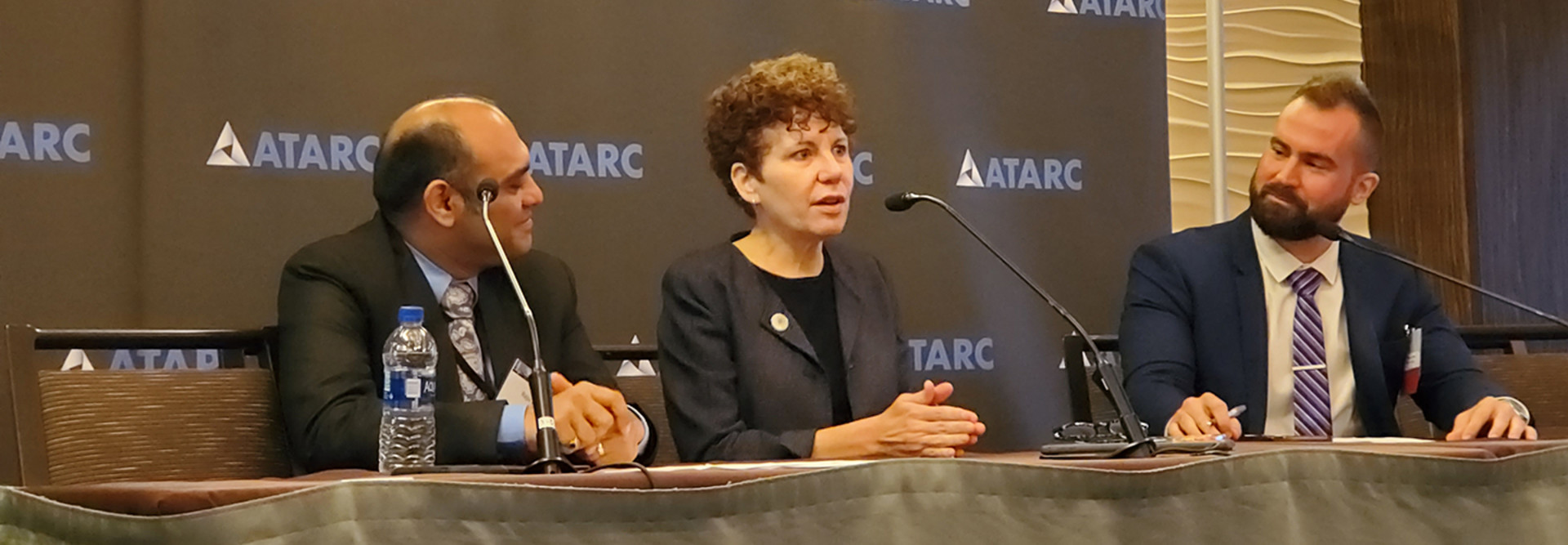GITEC 2019: USDA, NSF Embrace Modernization But Urge Focus on Workers
IT modernization was front and center at the 2019 GITEC Emerging Technology Conference in Annapolis, Md., and practically every federal IT leader who spoke discussed various initiatives they are taking on artificial intelligence, blockchain, cybersecurity modernization and cloud migration. However, several also urged their colleagues not to forget about how such rapid advances will impact their employees, and to plan for how to help them through the transition.
Dorothy Aronson, CIO of the National Science Foundation, noted during a panel at the conference that “IT is spreading in such a way that everyone is going to have to sort of be IT-ish,” and that having the CIO’s office serve a purely administrative function is no longer realistic at agencies.
JOIN THE CONVERSATION: Follow @FedTechMagazine on Twitter for continued GITEC 2019 coverage.
Even as technology is spreading to every part of an agency’s mission, Aronson said she worries a lot about the workers, and that sometimes the rate of change does not take into account how to “take the people along with us.” She added that she does not think any IT modernization project is “really successful if it leaves the people out.”
If an agency is rolling out an AI solution that will take away from the work of an individual employee in some way, IT leaders need to think through what that worker’s professional life will be like if the AI deployment succeeds, Aronson said.
The best person to implement an AI agent or bot is likely the person whose tasks the bot is taking over, she said, since agencies do not need to train someone else.
“What I would like to see happen is that we as federal people would take some part of our day to learn something new so we can always be working toward some future objective,” Aronson said. “Where are we going with ourselves?”
Prepare Feds for the Future of Work
Raju Shah, deputy CIO of the Agriculture Department’s Food Safety and Inspection Service, speaking alongside Aronson, noted that the USDA has undergone significant changes in the past few years as the agency has modernized via the General Services Administration’s Centers of Excellence program.
The USDA used to have 18 different CIOs, he noted. Now it has one. The USDA has already consolidated 38 data centers into two, and the numerous call centers spread across the country will be consolidated into one by the end of July.
At the same time, Shah acknowledged that IT skill sets are “totally changing” at the USDA, and that is impacting the workforce. He said USDA CIO Gary Washington has been actively encouraging IT employees to get more training and professional development.
Aronson said she believes that there will be “more jobs, not fewer” in the government in the future, but “they will be ones we haven’t imagined yet.” She noted that employees will need to learn how to build and train AI tools and that there is always a demand for cybersecurity workers. However, she also said that feds need to continue to build so-called soft skills like communication and teamwork.
In November, the NSF launched a competition called the Career Compass Challenge, designed to solicit ideas for how best to train workers for jobs of the future.
The NSF realized it was facing critical gaps in getting enough talent in the agency to modernize their skills as the agency was implementing AI into its business processes, Aronson said. The NSF wondered if it could use an AI tool itself, which would collect data about an employee’s background and interests, to predict the kind of job that employee would be best suited for in the future. The tool would then allow them to train for a few hours a day to get ready for that job.
The NSF issued the challenge around Thanksgiving thinking it would get a handful of responses, Aronson said. Instead, it received 60. “They were beautiful,” she said, adding that the NSF had a hard time choosing the five finalists.
In the next stage of the contest, entrants are encouraged to leverage and build upon the winning concepts awarded in the first stage to develop a working prototype for government testing and evaluation.
For more articles from GITEC 2019, check out our conference landing page.










